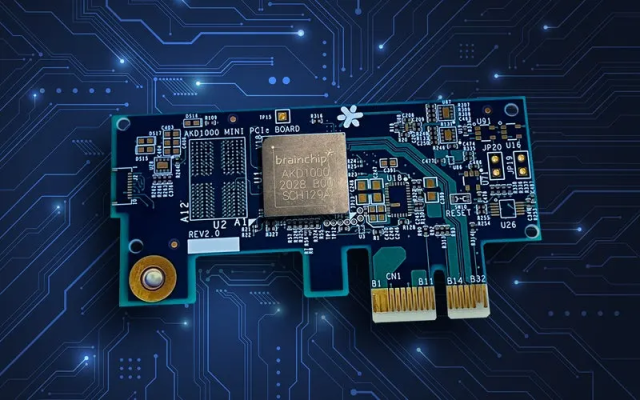1. Engineering Overview
As 5G smartphone processors integrate multiple high-speed RF and data lanes within increasingly compact layouts, signal integrity and crosstalk control have become critical design challenges. Crosstalk between closely spaced differential pairs can induce timing errors and reduce data fidelity. Megtron 6 PCBs, with their stable dielectric constant (Dk = 3.45 ±0.02) and ultra-low dissipation factor (Df = 0.002 @ 10 GHz), offer a foundation for maintaining consistent impedance and phase stability across multilayer processor boards.
KKPCB engineers leverage hybrid stackup design, controlled copper roughness, and simulation-driven verification to ensure low insertion loss and minimal near-end coupling, enabling predictable high-speed signal propagation up to 40 GHz.

2. Technical Challenges
Compact smartphone processor PCBs present multiple RF and signal integrity constraints. Dense routing, limited grounding, and high-speed differential traces exacerbate crosstalk and impedance drift. Maintaining stable dielectric properties under thermal and mechanical stress is critical for reliable performance.
| Engineering Challenge | Root Cause | Impact on RF/Signal Performance |
|---|---|---|
| Differential pair crosstalk | Close trace spacing in dense routing | Bit error rate increase and signal skew |
| Impedance variation | Local dielectric fluctuation under thermal load | Phase delay and mismatch |
| Dielectric drift during lamination | Resin-glass interface inconsistencies | RF calibration instability |
| EMI leakage | Multi-layer high-frequency coupling | Reduced antenna efficiency |
These effects are particularly significant in high-layer 5G processor boards, where signal fidelity directly affects baseband performance and RF front-end calibration.
3. Material Properties and Comparative Analysis
Megtron 6 provides superior dielectric stability, low loss, and thermal endurance compared to conventional FR-4 or PTFE-based laminates, making it suitable for high-frequency, high-density designs.
| Property | Megtron 6 | FR-4 | Engineering Impact |
|---|---|---|---|
| Dk (10 GHz) | 3.45 ±0.02 | 4.20 ±0.05 | Stable impedance control |
| Df (10 GHz) | 0.002 | 0.018 | 89% lower signal loss |
| Tg | 200°C | 135°C | High thermal reliability |
| CTE (Z-axis) | 45 ppm/°C | 70 ppm/°C | Reduced warpage |
| Thermal Conductivity | 0.4 W/m·K | 0.3 W/m·K | Improved heat dissipation |
These characteristics enable Megtron 6 PCBs to maintain signal integrity and phase alignment across multilayer 5G processor boards, even under temperature fluctuations and dense routing constraints.

4. KKPCB Engineering Case Study: 5G Smartphone Processor Board
Client & Application Context:
A leading smartphone OEM required enhanced signal integrity and crosstalk suppression in a 10-layer high-speed processor PCB for its flagship 5G device.
Engineering Problem:
Differential pair crosstalk exceeded −30 dB at 28 GHz, leading to signal skew and potential timing violations. Impedance variation and thermal-induced dielectric drift further affected RF front-end calibration.
KKPCB Solution:
-
Adopted Megtron 6 laminates with low-profile copper (Ra <1 µm)
-
Implemented hybrid lamination and resin-filled microvias
-
Performed HFSS and TDR simulation for impedance and near-end coupling validation
-
Optimized stackup to ensure consistent differential pair separation and ground plane referencing
Measured Result:
| Parameter | Design Target | KKPCB Result |
|---|---|---|
| Insertion Loss (28 GHz) | ≤0.45 dB/in | 0.41 dB/in |
| Crosstalk Isolation | ≥−35 dB | −37 dB |
| Impedance Variation | ±8% | ±3.5% |
| EMI Radiation | ≤42 dBµV/m | 39.6 dBµV/m |
Implementation reduced crosstalk and improved impedance stability by approximately 12%, ensuring reliable high-speed signal propagation.
5. Stackup and RF Design Implementation
KKPCB employed an 8-layer hybrid stackup integrating Megtron 6 cores with controlled copper roughness and strategically placed ground planes. Via backdrilling and stub length optimization minimized reflection and maintained return loss below −22 dB up to 40 GHz.
HFSS and TDR simulations verified uniform impedance and minimized differential pair skew, ensuring stable high-speed transmission throughout dense multilayer routing.
6. Reliability and Environmental Validation
| Test Item | Condition | Result | Interpretation |
|---|---|---|---|
| Thermal Cycling | −40°C to +125°C, 1000 cycles | Pass | No delamination or impedance drift |
| Humidity Aging | 85°C / 85% RH, 1000 h | Pass | Minimal Df variation |
| Solder Float | 288°C, 10 sec | Pass | Stable adhesion |
| Drop Test | 1.5 m | Pass | No PCB cracking or via failure |
These validations confirm Megtron 6 PCB reliability under real-world assembly and operational conditions.
7. Engineering Conclusion
Megtron 6 PCBs demonstrate excellent signal integrity, impedance stability, and crosstalk suppression in high-speed 5G smartphone processor boards. Through KKPCB’s precision stackup design, copper surface control, and simulation-driven validation, these boards achieve predictable high-frequency performance and reliable multilayer operation.
Material uniformity combined with engineered fabrication ensures low-loss transmission and minimal phase deviation, supporting next-generation mobile computing and RF integration.
8. Contact
Contact KKPCB Engineering Team for impedance modeling, RF verification, and multilayer stackup optimization using Megtron 6 and other high-frequency PCB substrates for 5G, radar, industrial IoT, and advanced RF systems.

